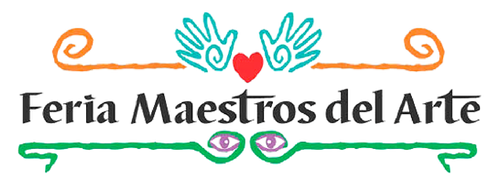
Leonardo Linares Vargas, Mexico City, Mexico
Leonardo Linares is the grandson of Don Pedro Linares, creator of the alebrije art form in 1936 - strange images that spring from the imagination.
How they came to be alebrijes is a beautiful story of which the family is very proud. The dragon-like tails painted in a multitude of colors accentuate their hideous appearance and inject them with a bit of humor and tenderness. Alebrijes, heavenly and devilish creatures. Mysterious and playful. Seductive but repulsive. Fruit of the imagination of Pedro Linares, undisputed master of the art of cartoneria, the creation of layered paper sculptures. The unique style of Don Pedro and Leonardo Linares has earned them a place in the popular art collector's bible, "Grandes Maestros del Arte Popular Mexicano", published by Fomento Cultural Banamex.
More than 80 years ago, when his grandfather was suffering from a fatal illness he had a dream in which he was in an unknown place, where there were strange animals, trees, rocks, clouds, animals of changing shapes, with horns, claws and wings and he heard the word over and over again, "alebrije, alebrije, alebrije". He was not afraid because he knew these creatures were good. When he awoke, he found himself at home again and his illness was cured. Don Pedro had already worked with clay, wood, cane, etc. and felt the overwhelming urge to re-create the figures he saw in his dream.
You may have heard that alebrijes began in Oaxaca. So how is Pedro Linares credited as the creator of this art? There was a cultural exchange that took place between Pedro Linares and artisans who became fascinated with alebrijes and began creating them using wood. This was 40 years after Pedro Linares created his first alebrije.
Alebrijes are such surrealistic figures that they attracted the attention of the renowned poet of the surrealist literary movement, André Breton, who took many to Europe, where they remain on permanent display in Paris.
The famous Don Pedro passed his love of working with paper and pulp to his descendants. Leonardo has become an unrivaled artist in his own right. Extraordinary quality, the inheritance of his master's vision in capturing traditional subjects and giving them form in paper sculpture. Leonardo has mastered the technique of making alebrijes and over the years, has improved his technique and given his own special imaginative twists to the alebrijes he creates.
Alebrijes have made this family famous, both in Mexico and internationally. Wrapping paper or newspaper is used to cover a cane or wire frame. The paper is glued with a flour-based paste of glue. Colors come from aniline dyes or commercial oil-based paints.
Artisans of deep-rooted popular lineage, the Linares family's fantasies have generated prodigious, complete collections of popular characters turned into skeleton-like characters: Pedro Linares himself, winner of the National Arts and Sciences Award. Paper and pulp, in the hands of the Linares family, become an indisputable creative work of art that conveys a subtle message, a mixture of satire, humor and optimism in the face of life.
First, the paper is torn manually into small pieces in order to preserve the filaments and to make the work easier to manipulate and adhere to the mold that will give shape. Normally, layers of wrapping paper are alternated with layers of newspaper. The mold to be used is first slipped with grease so that the paper does not stick to it. Then the glue-covered paper is applied, carefully layered to maintain a smooth surface.
A paste or paste is used to fix the layers of paper. It is prepared by mixing flour and water, a recipe similar to Mexican atole, and boiling it until it reaches the thick consistency necessary for proper adhesion of the multiple layers of paper. After the first layer, the piece must be left to dry for a while. Later, Ricardo continues the application of parts until the proper thickness is achieved.
For large pieces, a frame of cane or wire, known as the core is used, tied with waxed rope. When this technique is used, the structure of the figure is assembled and then covered with paper, applied with paste, until the layer is thick enough. It is then placed in the sun to dry or if time does not permit, it is dried near a hot stove.
Another method of making the round heads or shapes involves the use of an inflated balloon on which paste paper is applied. The piece is then hung by the mouth of the balloon until dry, at which time the balloon is deflated or removed.
For large pieces, a framework of cane or wire, known as the core is used, tied with waxed rope. When this technique is used, the structure of the figure is assembled and then covered with paper, applied with paste, until the layer is thick enough. It is then placed in the sun to dry or if time does not permit, it is dried near a hot stove.
Another method of making the round heads or shapes involves the use of an inflated balloon on which paste paper is applied. The piece is then hung by the mouth of the balloon until dry, at which time the balloon is deflated or removed.
In making these alebrijes, Leonardo combines techniques - the result is that each piece is unique. Once the paper has dried in the mold, the figure must be removed by cutting with a sharp knife. Then the separate elements are put back together with glue and more paper is added. Then comes the - whitening of the piece. With white paint or lime. This process provides a more solid consistency for the application of brightly colored paints.
Leonardo's imagination. Depending on the size and complexity of the alebrije, it may take 3-8 weeks for the construction of a single piece.
Alebrijes
555 768 6311 or 555 552 9938 (workshop)
leonardo_linares631106@hotmail.com
México, México

